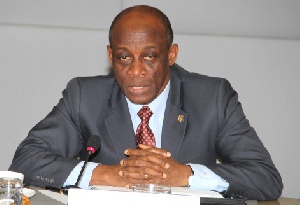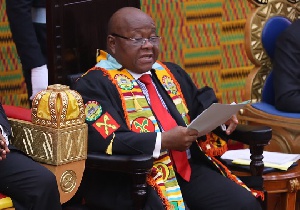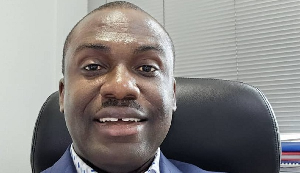Finance Minister Seth Terkper is hopeful that the establishment of an Export-Import (EXIM) bank will go a long way to boost exports, which will in turn provide the needed forex to stabilise the local currency.
Speaking on an Accra-based radio station, Citi FM, Mr. Terkper was upbeat that an EXIM bank can solve the current cedi depreciation due to its low interest rates, and will entice exporters to export more. Vietnam is a class example of economies that have used the EXIM bank to grow.
“Vietnam today has an EXIM bank. We were told it was established with the assistance of Canada, Korea and others. Why can’t Ghana have an EXIM bank that will support SMEs who want to do exports, so that we expand the export base and earn more foreign exchange?
“We all complain about depreciation of the cedi. The solution is an EXIM bank that provides guarantees and loans at reasonable rates. That is what COCOBOD does to support local farmers, and so we have to develop other institutions to do the same. That is the EXIM bank strategy,” he said.
Plans to set up a Ghana Exim Bank was originally contained in the government's 2015 budget presented to parliament in late 2014. As a follow-up, the President in February this year set up a task-force to develop structures that will ensure the bank’s success.
The task-force had representatives from the Association of Ghana Industries, Export Finance Company, Exim Guaranty Company, Ghana Export Promotion Authority, EDAIF, the Federation of Ghanaian Exporters, the Bank of Ghana, Ministry of Trade and Industry, Ministry of Finance, and the Attorney General’s Department.
The Ghana Exim Bank, according to the government, is expected to be a vehicle for the consolidation of the current export finance activities of the Export Development and Agricultural Investment Fund (EDAIF), Exim Guaranty Company and Export Finance Company.
Mr. Terkper said earlier in July this year when he presented the mid-year budget review, the EXIM bank was expected to be operational by 2016 and help address the challenge of long-term credit for exporters.
Meanwhile, some stakeholders have expressed their own misgivings about the prospect of an EXIM bank. CEO of the Private Enterprise Federation (PEF) Nana Osei-Bonsu, in an interview with the B&FT in September this year, said government’s intention to turn the Export Development and Agricultural Investment Fund (EDAIF) into an Exim Bank will not achieve the needed results if it is not well-resourced.
“Exim Guaranty and EDAIF as they are need US$200m to do their job; merging them into EXIM without the US$200m will not change anything. If we are creating an EXIM bank, what are the resources to empower dependent industries?
“Merely merging funds to form an EXIM bank will not be enough. It must be stuffed with adequate resources so that businesses can access capital for technical skills development and other pertinent issues, such as post-harvest losses,” he said.
“I’m not against the EXIM bank being set up; I’m rather for having dual responsibilities so that everybody is doing their thing and increasing the resource availability.
“I would prefer we leave them as it is now, with the low administrative costs, and resource them to provide the needed finance to the private sector. EDAIF as it was had a function; merging EDAIF with Exim Bank, does it mean they are going to do everything EDAIF was doing plus everything EXIM is doing?
Business News of Friday, 23 October 2015
Source: B&FT







![Isaac Kwadwo Ampong [L] and President John Mahama Isaac Kwadwo Ampong [L] and President John Mahama](https://cdn.ghanaweb.com/imagelib/pics/549/54996138.295.jpg)





